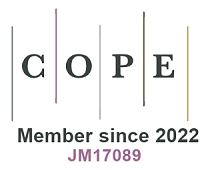fig6

Figure 6. A: The siRNA functional regions. More modifications are tolerated on the passenger strand (red squares) which is not involved in argonaute 2-mediated mRNA cleavage. A targeting moiety can be covalently linked to the 3’ strand (orange arrow). A stable phosphonate resistant to dephosphorylation enzymes can be included instead of phosphate (blue rod) at the 5’end of the guide siRNA (green square). Both are necessary and compatible for binding the guide strand to the RISC complex. Fewer modifications are allowed on the seed region of the guide siRNA strand (nucleotides 2 to 8). An optimized guide strand must contain a flexible 5′ end (which can be obtained by lowering base pairing and facilitates capture by the RISC complex), a high affinity ‘seed’ region, which drives the initial base pairing between the guide strand and mRNA target, and a lower affinity 3′-region required for cleaved mRNA release. B: Frequently used siRNAs are made resistant to exonucleases by 2 to 3 terminal phosphorothioate linkages on both 3’ and 5’ terminals of each strand. Modified sugars 2’-OMe and 2’-fluoro have led to siRNAs highly resistant to nuclease, of improved bioavailability, and of high binding affinity to the RISC complex. This leads to an unprecedented duration of action which can reach up to 6 months or more after a single administration, due to the recycling mechanism displayed in Figures 4 and 5 inspired from[18,29]. C: Scheme of a di-siRNA[62,145]. D: In this presented geometry, the antisense strand is of 22 bases canonical length, while the sense passenger strand is much longer (36 bases), and it auto-hybridizes through a GC-rich sequence (GCAGCC hybridized to GGCUGC) to form a GAAA loop at its extremity.






